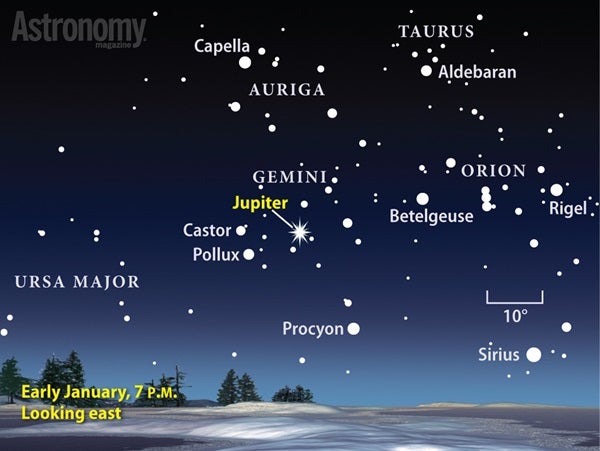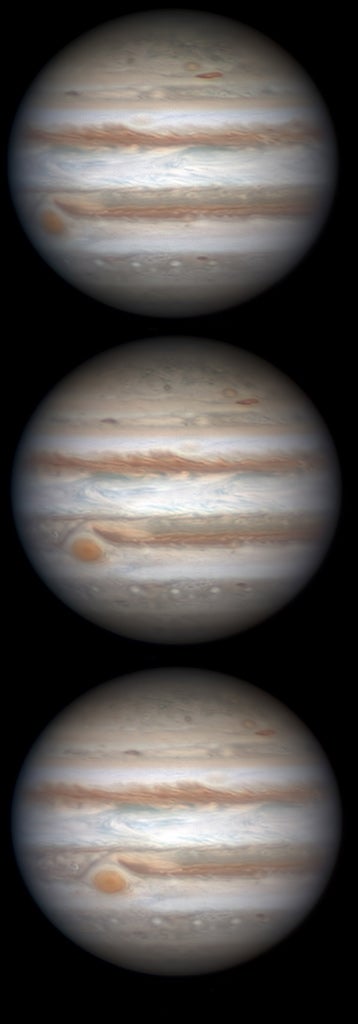January’s opposition also is the point when the planet lies closest to Earth, so Jupiter shines brightest and appears largest. Furthermore, opposition places a planet at its highest point — due south — at local midnight. When Jupiter is at its highest point, we view it through the least amount of Earth’s atmosphere. The higher a celestial object, the less air we’re looking through and the better the view.
For several months around its opposition date, Jupiter rises in the northeast. It lies in the zodiac constellation Gemini the Twins. Fortunately, that position means Jupiter will appear high in the sky. From latitude 40° north, the planet’s highest altitude will reach 72° above the southern horizon. This altitude goes up 1° for every degree south you travel.
Jupiter is easy to spot — it shines at magnitude –2.7. This means it appears more than three times as bright as the brightest star in the night sky, Sirius, which shines some 40° south of Jupiter.
At this year’s opposition, Jupiter’s apparent size in a telescope reaches 47 arcseconds. (One arcsecond equals 1/3,600 of 1°.) This large apparent size offers great opportunities for viewing cloud features in the jovian atmosphere. Jupiter completes one rotation in less than 10 hours. Around opposition, it remains above the horizon for at least 12 hours, which allows you to view the entire planet during a single night.
Jupiter’s four bright moons are easy targets through small telescopes. Io takes less than two days to orbit Jupiter, so you can see its relative position change in an hour or so. Our line of sight lies in the plane of the moons’ orbits, so we see occultations (when a moon goes behind Jupiter), eclipses (when Jupiter’s shadow falls on a moon), and transits (when a moon passes in front of Jupiter) at various times. Indeed, watching these four satellites provides plenty of action through a telescope to warm January’s chilly nights.
Fun facts
- Jupiter, the largest planet, could hold 1,266 Earths inside it.
- The seven other planets combined would constitute only 68 percent of Jupiter’s volume.
- Jupiter is more than 317 times as massive as Earth.
- Jupiter spins so rapidly that its polar diameter is only 93 percent of its equatorial diameter.
- Jupiter is the second most reflective planet (next to Venus). It reflects 52 percent of the sunlight falling on it. By comparison, Earth reflects 37 percent of sunlight back into space.
- The solar system’s largest satellite is Ganymede, with a diameter of nearly 3,300 miles (5,270km).
- Video: Easy-to-find objects in the 2013–2014 winter sky, with Richard Talcott, senior editor
- Video: Tour the solar system: Jupiter, with Richard Talcott, senior editor
- StarDome: Locate Venus in your night sky with our interactive star chart.
- The Sky this Week: Get your Jupiter observing info from a daily digest of celestial events coming soon to a sky near you.
- Sign up for our free weekly e-mail newsletter.












